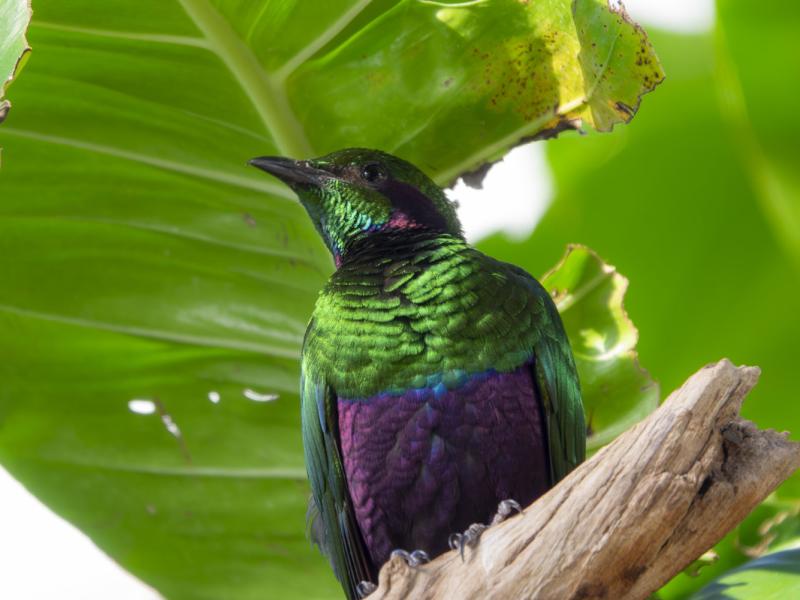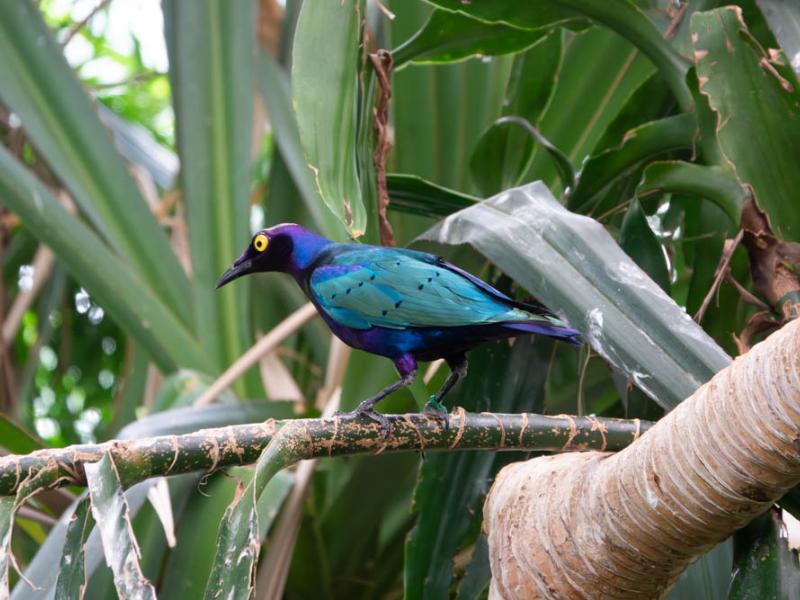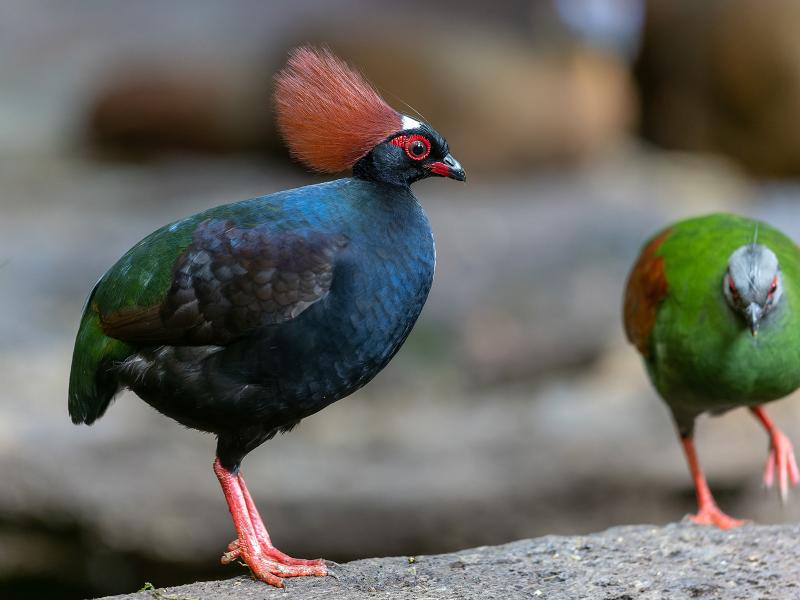
These ultra-rare birds once lived on the island of Guam. Declared extinct in the wild in 1988 due to non-native snake predation, the Oregon Zoo is one of the few places in the world the sihek kingfisher can now be found.
The life of a sihek kingfisher
Sihek kingfishers grow up to eight inches long and weigh between 1.7 and 2.7 ounces. They live 15 to 20 years in human care. There are about 150 left in the world, all being cared for by zoos.
Historically, sihek kingfishers were found throughout a range of habitats in Guam. They prefer limestone forests and woodlands for feeding and nesting. Females and males dig out nests in soft, rotting trees as a bonding courtship behavior.
Females lay one to three eggs at a time, which hatch after about 22 days. Males and females share parenting duties and remain together for life. They are extremely protective and territorial, defending their nests from other kingfishers.
Despite their name, sihek kingfishers do not eat fish. They feed on insects, small lizards and crustaceans found on the forest floor. Their main predator is the brown tree snake, an invasive species introduced to Guam that led to the sihek kingfisher’s extinction in the wild. Feral cats also contributed to their extinction.
Sihek kingfisher conservation
All remaining sihek kingfishers have been brought into human care at accredited U.S. zoos. Eventually, conservationists plan to reintroduce the species into the wild to increase the global population in a collaborative effort supported by the Oregon Zoo.
Sihek kingfishers at the zoo
Located in the Vollum Aviary.




